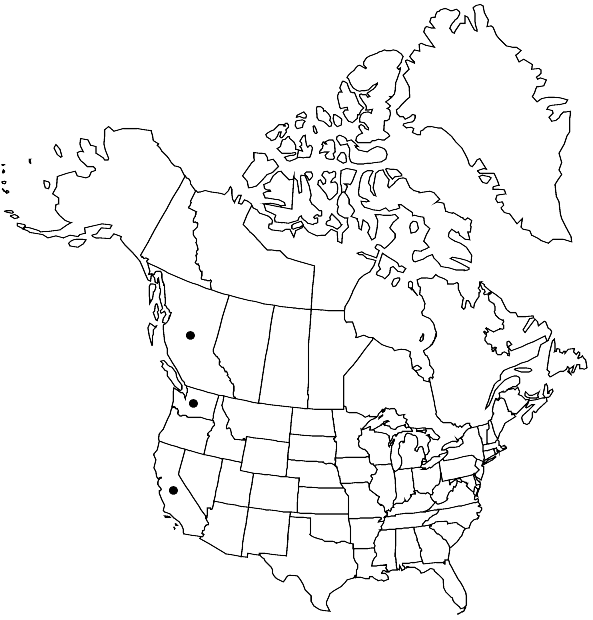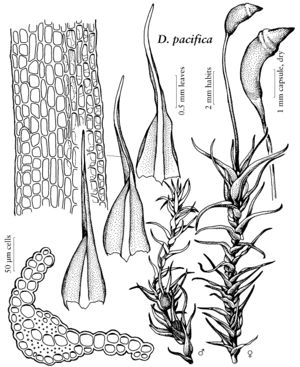Difference between revisions of "Dicranella pacifica"
Bryologist 73: 703. 1970,.
FNA>Volume Importer |
FNA>Volume Importer |
Revision as of 19:40, 24 September 2019
Plants 2.5–4 cm, yellowish, brownish, or dark green. Leaves erect-spreading and flexuose-crisped when dry, 2.5–4 mm, gradually narrowed from an ovate base to a long, slender, subtubulose subula; margins distinctly recurved below, erect or incurved above, serrulate at or near the slender apex; costa percurrent, filling most of the subula; distal cells subquadrate, 1–2:1 (ca. 17 × 10 µm), 2-stratose at the margins. Sexual condition dioicous. Seta red, 5–8 mm. Capsule inclined to horizontal, 0.8 mm, obovoid-oblong, curved, not strumose, smooth; annulus none; operculum-conic; peristome teeth ca. 425 µm, divided 1/2 length distally. Spores 15–17 µm, smooth.
Phenology: Capsules mature fall and winter.
Habitat: Wet, silty soil of roadside ditch banks and soil of cliff crevices
Elevation: low to medium elevations
Distribution

B.C., Calif., Wash.
Discussion
Distinctive features of Dicranella pacifica include slender, flexuose-crisped, subtubulose leaves with margins recurved below but 2-stratose and incurved above, high-conic opercula, and annulus absent.
Selected References
None.
